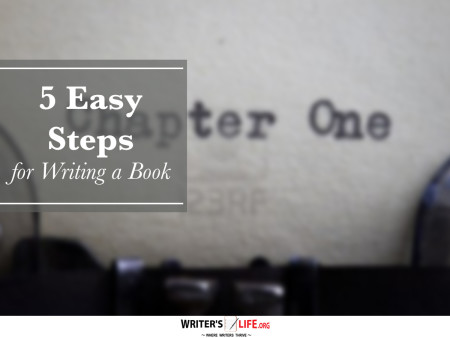- How To Tackle Jealousy In Creative Writing
- Common Submission Mistakes
- How To Stop Your Blog Becoming Boring
- The One Thing Every Successful Writer Has In Common
- How To Make Yourself Aware Of Publishing Scams
- Why Almost ALL Writers Make These Grammar Mistakes At Some Point
- 5 Tips For Authors On How To Deal With Rejection
- Top Mistakes to Avoid When Writing a Novel
- How to Avoid Common New Writer Mistakes
- 10 Mistakes New Fiction Writers Make
How to Write a Scene That Changes Everything

Scene-Changing Writing is the secret ingredient that turns a good story into a captivating masterpiece. Imagine a scene so compelling that it shifts the entire narrative's trajectory, leaving readers breathless and begging for more. How do you craft such pivotal moments? Let's dive into the art of writing transformative scenes that anchor your story and engage your audience.
Understanding the Power of Scene Dynamics Writing
Every writer aspires to craft scenes that resonate deeply with readers. Powerful Scene Writing is about creating moments that alter perceptions and shift the storyline into new territories. It's akin to turning a corner and finding a completely new perspective on things. But what makes a scene transformative? It's a blend of emotional depth, sharp dialogue, and unpredictable twists—elements that fuel a scene-driven storytelling technique.
When crafting scene-changing moments, you must focus on the characters' development, the story’s pace, and the plot's direction. Think of these scenes as the beating heart of your narrative structure. Just like a heart, effective scene mastery continuously replenishes the story, giving it life and vigor. Ensure that emotions are not only felt but experienced through vivid descriptions and intense interactions.
Creating Scene Shifts with Purpose and Intent
Creating scene shifts requires more than just a desire to shock or surprise. It involves strategic planning and thoughtful execution. Narrative scene changes should evolve naturally from your story's organic developments rather than feeling forced or contrived. Whether it's a pivotal revelation or a turning point for your protagonist, each scene change should be a logical next step in your storytelling journey.
Consider the pacing of your narrative. A well-placed scene change can either accelerate the action or slow down the tempo for introspection and character reflection. Balancing these shifts is crucial to maintaining reader engagement. Don't shy away from using narrative devices such as foreshadowing or symbolism to enrich your scene-driven storytelling.
- Ensure each scene serves a clear purpose in the overall narrative.
- Use dialogue and action to reveal character motivations and conflicts.
- Integrate sensory details to create an immersive experience for the reader.
Mastering Scene Impact Strategies for Dramatic Transformations
Transform Scene Writing isn't just about creating change; it's about crafting impactful changes that resonate. An effective scene not only takes the story in a new direction but also leaves an indelible impact on the reader. Scene impact strategies involve manipulating elements like tension, conflict, and resolution to build anticipation and deliver payoff.
According to Wikipedia, the concept of the hero's journey is a classic model that highlights scene changes effectively. Every threshold crossed by the hero within this journey marks a pivotal scene that shifts the narrative. By understanding such frameworks, you can leverage them to enhance your scene dynamics writing technique.
Crafting an unforgettable scene means not only focusing on what happens but on how it happens. Consider utilizing unexpected plot twists or character revelations to elevate the emotional stakes. Your readers should feel the emotional tremors of these transformations long after they’ve turned the page.
The Art of Scene-Driven Storytelling and Its Long-Term Effects
Scene-driven storytelling is about more than just the immediate shock. It's about building a lasting impression that enriches your narrative's thematic depth. Each scene change should contribute to a larger tapestry, weaving a symphony of moments that propel your characters and story forward.
If you're eager to see how your story fares after perfecting scene-changing writing, it's worth considering how you'll promote your book once it's published. Want to promote your book after it’s published? Check out our Book Marketing Articles.
The essence of great story writing lies in its capacity to transform through each scene, leading readers on an unforgettable journey.
Keep in mind that the ultimate goal isn't just to write an unforgettable scene but to craft a tapestry of scenes, each contributing to an unforgettable narrative. Scene-Driven Storytelling should aspire to connect with readers on a personal level, leaving them eager for more.
Frequently Asked Questions About Scene-Changing Writing
Q: How do I ensure a scene is pivotal?
A: Focus on character development, emotional stakes, and plot advancement. Each scene should shift the narrative significantly.
Q: What are the elements of powerful scene writing?
A: Emotional depth, engaging dialogue, and plot progression are key elements. Use them to create impactful scene changes.
Q: Can any scene change the narrative?
A: Not all scenes need to be transformative. Choose moments with the greatest potential for character growth and story evolution.
If you're serious about growing your author career, don't miss out on these free tools and templates built specifically for writers. Access all 7 free resources here.


























